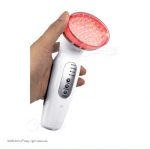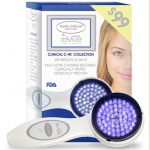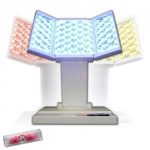How Does It Work?
Blue light therapy is the practice of use blue UV lighting to treat conditions such as Seasonal Affective Disorder, acne, insomnia, and so on. However, blue light has recently been being used to help fight skin cancer.
Photodynamic therapy, or PDT, is a form of treatment that uses drugs, or photosynthesizing agents, accompanied by light to kill cancer cells. The drugs become activated by specific kinds of light which triggers them to begin working. The American Cancer Society took to their website to discuss Photodynamic Therapy and it’s life changing effects on cancer. The article explained,
“Depending on the part of the body being treated, the photosensitizing agent is either put into the bloodstream through a vein or put on the skin. Over a certain amount of time the drug is absorbed by the cancer cells. Then light is applied to the area to be treated. The light causes the drug to react with oxygen, which forms a chemical that kills the cells. Photodynamic Therapy might also help by destroying the blood vessels that feed the cancer cells and by alerting the immune system to attack the cancer. The period of time between when the drug is given and when the light is applied is called the drug-to-light interval. It can be anywhere from a couple of hours to a couple of days, depending on the drug used.” (cancer.org)
Blue light therapy is the practice of use blue UV lighting to treat conditions such as Seasonal Affective Disorder, acne, insomnia, and so on. However, blue light has recently been being used to help fight skin cancer.
Photodynamic therapy, or PDT, is a form of treatment that uses drugs, or photosynthesizing agents, accompanied by light to kill cancer cells. The drugs become activated by specific kinds of light which triggers them to begin working. The American Cancer Society took to their website to discuss Photodynamic Therapy and it’s life changing effects on cancer. The article explained,
“Depending on the part of the body being treated, the photosensitizing agent is either put into the bloodstream through a vein or put on the skin. Over a certain amount of time the drug is absorbed by the cancer cells. Then light is applied to the area to be treated. The light causes the drug to react with oxygen, which forms a chemical that kills the cells. Photodynamic Therapy might also help by destroying the blood vessels that feed the cancer cells and by alerting the immune system to attack the cancer. The period of time between when the drug is given and when the light is applied is called the drug-to-light interval. It can be anywhere from a couple of hours to a couple of days, depending on the drug used.” (cancer.org)
The Good Stuff…
• No long term side effects.
• Less invasive than surgery.
• Usually a short process.
• Usually done as an outpatient.
• Has wonderful accuracy for targeting specific areas of the body.
• Can be repeated multiple times at the same site on the body.
• Little to no scarring.
• Costs less than other treatments.
The Not So Good Stuff…
• Can only treat areas where light can reach. Meaning the problem site has to be on or just under the skin, or in the lining organs. It cannot be used to treat larger scale cancers or cancers that have grown deep into the skin or organs.
• Can’t treat cancer that has spread all over.
• Cannot be used in people with certain blood diseases. For example, any of the Porphyrias or people with allergies to the Porphyrins.
• The treatment can leave people sensitive to light for a good amount of time.
In Sum…
Photodynamic Therapy is being proven to help treat certain types of cancer which means that it is help changing the world for the better. The process is not being widely used quite yet, but it is offered at some treatment centers. It is consistently being studied in clinics and is becoming much more appreciated as a responsible and effective option for cancer treatment. If the all magic blue light can kill cancer then it can improve the quality of life in this world.







